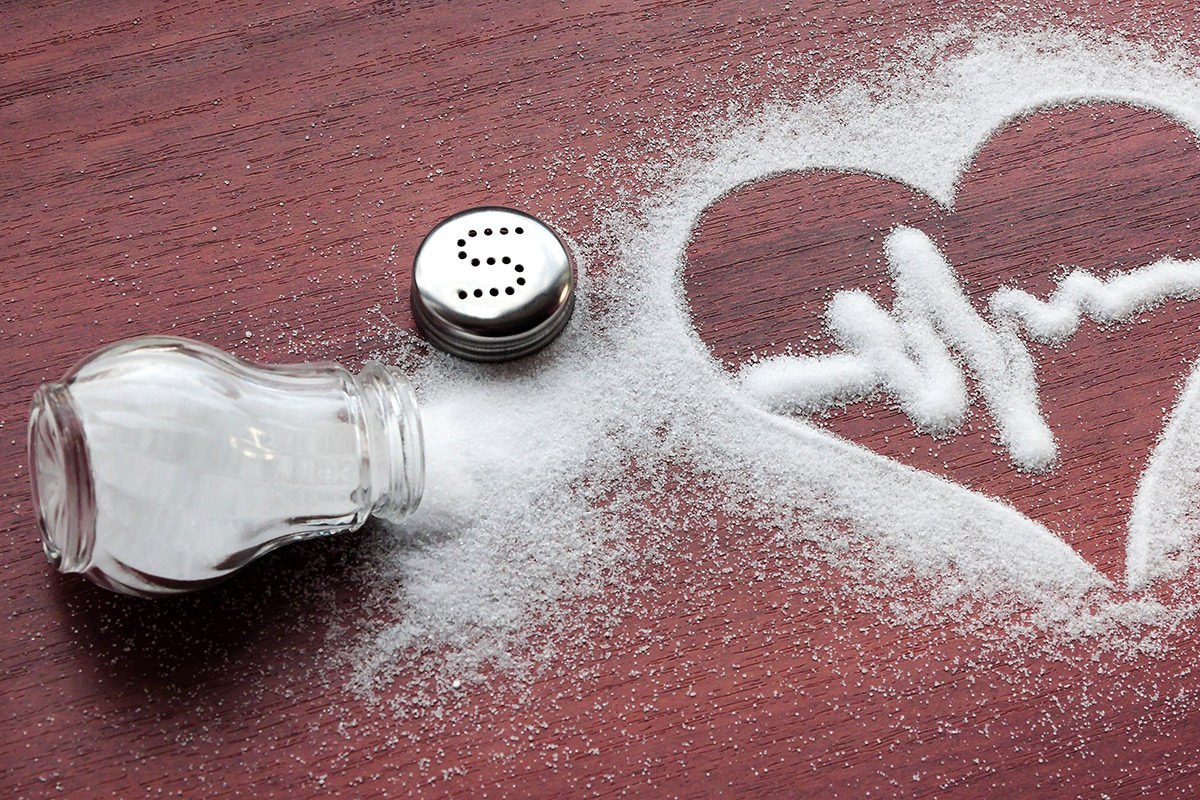The Bad Press Surrounding Salt
Salt has been a staple in our food for centuries, but recently, it has received a bad press.
It has been painted as the villain in our store cupboard, responsible for everything from high blood pressure to osteoporosis. However, increasingly, experts world-wide are questioning the suggested links between salt and cardiovascular disease. There is also growing evidence that some groups – notably the elderly, pregnant women and those who exercise – may be at risk from responding to blanket advice to reduce salt intake.
Here we outlines the facts about salt – its use in our bodies, food and wider lives; and presents the opinions and evidence of a significant scientific body which disagrees with the Government’s stance
Also In This Section:
- The Basic Facts
- The Case For Salt
- The Evidence
- Economic Benefits
- Environmental Impact
- Our Position Statement on the Government’s Salt Reduction Strategy
- Collated Research and Expert Opinion on the subject
The Basics Facts
Salt In Our Bodies
Salt is essential for our health. We each have about 250 grammes of salt in our bodies, which helps our cells to absorb nutrients, aids the digestion process, enables the transmission of nerve impulses, and much more.
The body is able to adjust to the amount of salt that we consume, such as through making us thirsty when it needs extra water to dilute the salt. A healthy body processes just the amount of salt it needs and the kidneys dispose of any excess.

Salt In Our Food
About 17 per cent of the salt we consume is found naturally in food, from fish to vegetables. The rest of our intake comes from the salt we add during cooking and at the table, and in processed foods.
For thousands of years, salt has been used to preserve food such as meat and dairy products. Even with the development of refrigeration, salt remains an important aid to food hygiene. Its role as a seasoning is also well known, but many of us are less familiar with its myriad of other functions.
In processed meats, salt acts as a binder, controls the colour and improves the tenderness. In bread, it strengthens gluten in the dough, providing uniform grain, texture and strength, allowing the dough to expand without tearing. It develops rind hardness and even consistency in cheese.
Salt In Our Lives
Salt in our food is perhaps its most well known use, but there’s a sprinkling of the white stuff in many other parts of our life too.
Every winter, between one and two million tonnes of rock salt is spread on the roads of Britain. It comes from mines of ancient underground salt deposits which, in the UK, are found in Cleveland, County Antrim and below the Cheshire town of Winsford. The UK’s salt mines have some 140 miles of tunnels – that’s almost as long as the M5 motorway.
Very pure salt is also commonly used to soften water. Both industrial and domestic water can be softened economically, using an ion-exchange process. The benefits range from environmental (as less energy is used by our heaters) to detergent consumption and the life of our fabric.
The Case for Salt
Poor diet, obesity, stress and excess alcohol are all factors that lead to high blood pressure and heart disease.
We can help ourselves by exercising and by ensuring that our diet includes plenty of fruit, vegetables and low-fat dairy products. More contentious is the debate on the value of reducing salt consumption.
Scientific research shows that lower sodium diets have a miniscule long term effect on the blood pressure of healthy individuals. In fact, for certain groups of people, such as pregnant women, senior citizens and those with an energetic lifestyle, cutting back on salt may actually be harmful.

Dr James Goodwin of Help the Aged warns of the risks posed to older people from heatwaves and advises: “To avoid dehydration, it’s vital to eat well in order to maintain salt intake and to drink lots of water. Adequate salt is very important – we can lose up to half a litre of sweat per hour in hot conditions.”
Cutting the salt in our food is not as simple as it sounds.
Food producers have voiced their concerns that public health could be endangered by the Food Standards Agency’s blanket salt reduction targets. Claire Cheney, director general of the Provision Trade Federation, is one of an increasing number of food industry representatives who have hit back at the FSA’s “unrealistic” targets. She was quote in The Times as saying: “This will force us to reduce the shelf-life further and with that come serious food safety concerns, not least the risk of botulism.”
Her view is supported by the British Meat Processors Association. And the British Sandwich Association has denounced the targets as “absolutely staggering.” Jim Winship, chairman of the BSA, said: “We are already getting complaints from retailers that consumers don’t like the blandness of many sandwiches to meet existing salt targets.
We’ll soon be at a point where people stop buying sandwiches and make them at home where they add as much salt as they want.”
Have a look at what some of our editorial advisory board experts say here.
The Evidence
A host of research, including the Food Standards Agency’s National Diet and Nutrition Survey, has shown that there is no significant effect on the blood pressure of healthy people from eating salt.
Your kidneys very precisely filter your salt intake – any that is not essential to your body is excreted. Under medical supervision, a low-salt diet may be beneficial for those already suffering raised blood pressure. But, scientists internationally do not agree with the need for blanket advice on salt intake for the population as a whole.
Several large-scale intervention studies have shown that restriction of sodium in the diet has no effect on diastolic blood pressure and only a minimal effect on systolic blood pressure.
Since 1995, 10 studies in the United States have reported on whether low sodium diets produce health benefits. All 10 indicate that, among the general population, lower sodium diets don’t produce health benefits. In fact, not a single study has ever shown improved health outcomes for broad populations on reduced sodium diets.
In February 2004, a coalition of six Canadian medical groups rejected a recommendation for universal salt restriction, choosing instead to make lifestyle recommendations for reducing blood pressure such as exercising, eating a balanced diet, and stress management.
Most recently, a study from the Wolfson Medical Centre in Tel Aviv has shown that above average levels of aldosterone in the blood in healthy young adults can cause fibrosis and stiffening of the walls of large arteries along with inflammation and muscle enlargement, changes usually associated with high blood pressure. Aldosterone is released into the blood when salt intake is reduced and its main function is to conserve salt by preventing its excretion via the kidneys in the urine.
Our view is that salt is being damned without adequate evidence. Given the importance of the issue, we fail to understand why the government is not commissioning the research that is so badly needed. In the meantime, we would advocate a much more holistic attack on the nation’s dietary habits designed to reduce alcohol consumption, tackle obesity and increase consumption of fresh fruit and vegetables. Such factors have been found to have a marked effect on reducing blood pressure.
Economic Benefits
The human and monetary cost of not keeping roads in a safe order during snow and ice conditions is enormous.
Research has shown that for every £1 expended on winter road maintenance, about £8 is saved in the economy as a whole. (Thornes). And this takes no account of the potential for human tragedy.
A MORI poll survey indicated that over half the population would be prepared to pay more in their council tax to have their local routes salted.

Environmental Impact
In addition, members of The Salt Association seek to minimise the environmental impact of their manufacturing, storing and distributing operations using the available technology, and pursue continuous improvement in all their activities.
Regulation
The industry, in its various forms, is regulated through a number of European Directives that regulate operating practices, food safety and environmental performance. Environmental compliance for each manufacturing site is regulated through a combination of individual Local Authority (LA) permits and Environment Agency (EA) licences. The LA permits describe the control, monitoring and reporting regimes that each company must have in place, for controlled processes, to demonstrate compliance to standards relating to such matters as dust control, noise levels and air quality (if applicable).
Raw Material Extraction
The Salt Association has a diverse membership with a long history of manufacturing Vacuum Salt and Rock Salt from underground halite deposits. These are either mined by the “room and pillar” technique to produce rock salt, or by controlled brine pumping (solution mining) to produce brine for evaporated salt. Both techniques are proven technologies designed to minimise subsidence risk.
The proven UK salt reserves are extensive, with an estimated 500 years capacity at current extraction rates.
Energy Use
Evaporated salt is manufactured by evaporating the water from brine, under vacuum. This entails the use of heat energy, with implications for CO2 emissions. The vacuum process maximises energy efficiency that is closely monitored for both commercial and environmental reasons. The steam used for the evaporation process is generated in accordance with IPPC regulations and, wherever possible, is reused within the manufacturing process.
Whilst rock salt mining does require energy input, this is considerably lower than for evaporated salt. All manufacturers monitor and seek to maximise their energy efficiency. Users are encouraged to weigh the overall energy impact, including the lower distribution energy usage of indigenous supplies.
Abstractions and Discharges
Where relevant, the EA licences cover water abstraction requirements, discharges to water and operation of boiler plants. The salt industry has an excellent record of co-operation with the regulator and compliance with conditions detailed within each licence. As manufacturing and mining processes continue to evolve, the industry refines and improves its environmental performance to benefit the working environment, local communities and the environment in general.

Distribution
Evaporated salt is distributed in bags and in bulk. Vehicle movements are rationalised as far as possible consistent with customer needs, and reputable hauliers are used.
Packaging is recyclable and complies with the Essential Requirements Regulations and members comply with the Producer Responsibility Regulations.
Use
Salt has a wide range of disparate uses. It is not possible, therefore, for salt manufacturers to develop full life cycle analysis for their products in every use. If customers require information to assist in their own environmental assessments, individual manufacturers will give as much help as possible about the manufacture of the salt products that they supply.
